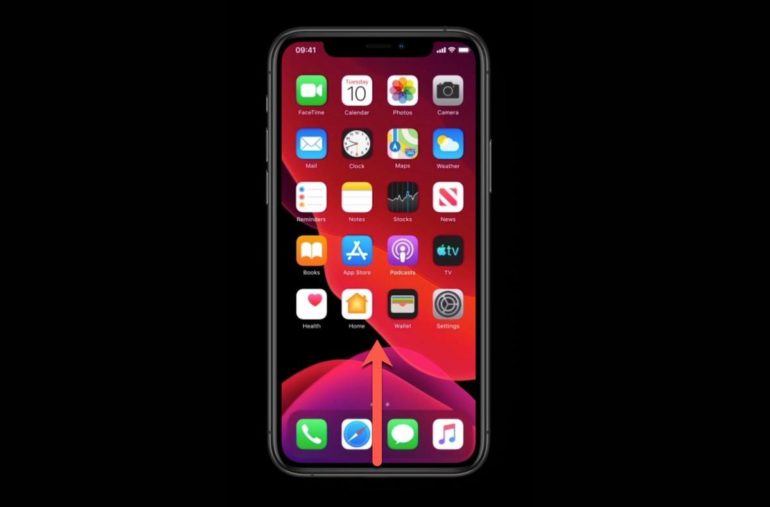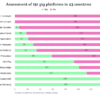You see that little heart? It’s killing me.
I’d ignored it for as long as I could.
I’m suspicious of opening apps that someone else has shoved onto my phone. Especially if they tell me how I’m living my life and suggest ways I could be living it better.
They were, after all, created by people who may merely be sanctimonious tech types with a tawdry life of their own. And I’m not specifically referring to anyone who works for Apple.
Recently, though, I succumbed. I opened the Apple Health app on my iPhone, just to see what was there.
I’m lying, slightly. I have too many friends who boast about how many steps they take every day.
I’d never considered such data. I try and walk. I try and bike. I try and move. I hope to survive a little longer.
But here was one friend telling me that, on a recent trip to New York, he’d taken 40,000 steps a day. Well, he’s a troubled soul.
Here’s To Your Health, But Not Your Sanity.
Still, I began to look at my Health app data, simultaneously fearing that this was a beginning that could only lead to a horrible end.
My iPhone Health app offered a few simple delights of information. The number of steps, the walking and riding distance, and the number of flights climbed.
It began to praise me. It said I was taking more steps and walking further than I did last year.
This seemed strange and I soon realized why. Last year, I used to go to a gym. I’d prop my phone up on the bike console, so it would never be in my pocket. This meant my phone didn’t count all those supposed steps.
Now, as I ride a stationary bike at home, the Health app sits in the pocket of my shorts and insists that I perform 7,000 steps while I’m biking. These steps constitute 2.7 miles.
Which they don’t. My bike tells me I’ve ridden 14 miles, up and downhills. The Health app is merely feeling that I appear to be taking strides. It can’t tell I’m on a bike.
Yet the insidious nature of apps is such that you can’t help but go back to them. Again and again.
Apple will tell me the Health app is only there to help me become a better, healthier person.
I’m beginning to worry it’s made me an even worse, more neurotic person.
You see, it would, at any instance, tell me I was walking less than I did the day before. Or the week before. Even if it was a 0.1 miles difference, the scolding was painful.
Every time I went downstairs, I made sure my iPhone was in my pocket. Just to better my step score, you understand.
Every time I went anywhere in the house — and I’m spending a lot of time in the house these days — I’d berate myself if I’d left my phone on the couch, on a table, or in the car.
I’d take a quick glance in the supermarket, just to see how I was scoring.
What is the mental cost of these things? How much, indeed, does a Health app raise your blood pressure?
Still, every time my phone claimed I’d climbed 52 flights of stairs I patted myself with pride. And kept looking at my Health app for more approbation.
iOS 14 Is Killing Me.
And then came iOS 14.
The Health app was now a habit. I was visiting it at least 10 times a day. I can now tell you exactly how many steps I take wafting around my local supermarket — 897.
I can tell you how many steps I take walking a golf course — 16,979.
But iOS 14 made me shiver. Suddenly, there were more metrics.
There was Double Support Time.
What?
“This is the percentage of time during a walk that both feet are on the ground. A lower value means you spend more of your walk with your weight on one foot instead of two, which can be a better sign of balance. During a walk, this measure will fall somewhere between 20% to 40%,” says Apple.
It adds: “Double Support Time is recorded automatically on iPhone when you carry your phone near your waist, such as in a pants pocket and walk steadily over flat ground.”
I was ranging in the mid to high 20s. But the agony was that I couldn’t be sure how good this was. My iPhone left me hanging between two feet. Am I balanced or unbalanced? Should I change my gait or my phone?
And now there’s Step Length. I have to worry if it gets shorter, as this means I’m getting older. Will I now artificially lengthen my Step Length, hence endangering my Double Support Time?
My biking complicates things further. I keep the phone in my pocket, in order to score more steps. At the same time, this reduces my average Step Length. After all, riding a bike feels — to the phone — like taking little steps. Suddenly, then, my average Step Length suggested I was 78 years old. (Disclosure: I’m not.)
I was clearly in trouble. My mind would now focus so hard on how I walked that I wouldn’t be able to think about anything else. This was like ballet dancer training conducted by the local police department.
There was more. Walking Speed. I can’t cope with this. Here’s Apple again: “Walking speed tends to slow down as you get older but sudden decreases may indicate a change in your health.”
Data is going to kill us prematurely, you know.
I hope I’m conscious of when I walk more slowly or more quickly. On the golf course, I don’t hurry, as I’m likely chatting to the people I’m playing with.
But now I found myself sneaking a look at the Health app to see if I’d lost a percentage point after a few holes.
Wait, I’m Lopsided?
I know we’re all supposed to define everything via data now. I feel sure there are many on Tinder whose profiles includes phrases such as “Double Support Time in the low teens” and “37,000 steps a day, man,” perhaps without the comma.
Apple, why have you done this to me?
This wasn’t, sadly, the last of it.
There’s now also a measure called Walking Asymmetry. What?
“Walking Asymmetry is the percent of time that your steps with one foot are faster or slower than the other foot.”
I can’t. I really can’t.
My phone suddenly wants me to know that “uneven walking patterns, such as limping, can be a sign of disease, injury, or other health issues.”
Limping can suggest something’s wrong? Isn’t data impressive?
The goal with Walking Asymmetry is to get as low a score as possible.
Mine was a wholesome 0%. Which is odd, as I have a thing called Peroneal Nerve Syndrome in one leg, which occasionally makes me limp a little.
Could it be that this app has made me go crazy with inaccurate information?
Wouldn’t that be a glorious sign of our times?



